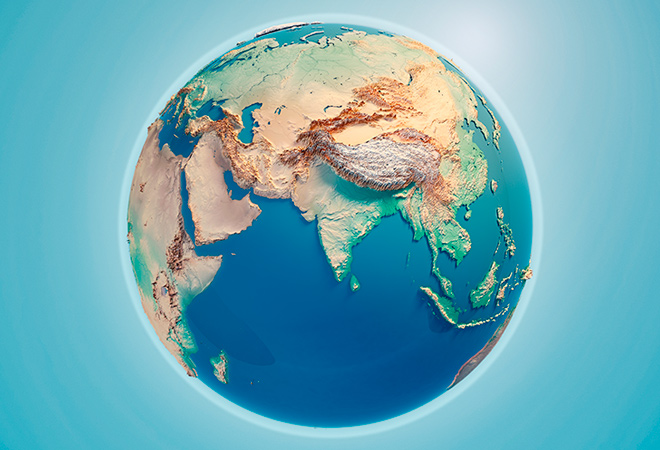-
CENTRES
Progammes & Centres
Location
As Jaishankar has pointed out, global shifts like the changing American role and increasing Chinese assertiveness have created more space for nations like India and Japan

External Affairs Minister S Jaishankar’s recent observation that the global scenario now provides greater manoeuvrability for a ‘middle power’ like India needs to be studied in depth and followed up with greater seriousness than done already. “The consequence of the repositioning of the US such that the big umbrella is now smaller than it used to be has allowed many other countries to play more autonomous roles. It does not affect us as much because we were never a part of an alliance system,” he said, participating at a virtual conference organised by a media house.
The post-Cold War Indian ‘middle path’ is not like its role as an active promoter and participant of the Non-Aligned Movement (NAM) earlier. Jaishankar too has made a pointed reference to NAM: “Non-alignment was a term of a particular era and geopolitical landscape. One aspect was independence, which remains a factor of continuity for us.” Jaishankar said that India must take more ‘risks’ as the world expected it to take a more proactive stance on “big issues”, including terrorism, maritime security, connectivity and climate change.
Despite the world’s expectations from India on many issues, New Delhi still needs to acknowledge that it cannot be wholly there until it is there in its own right. That will happen only when India becomes a self-sustaining economic powerhouse, not dependent still on massive FDI and even greater military supplies to defend itself at every turn.
It is enough to recall that one of the major Indian decisions in the wake of the current border stand-off with China was to blacklist Chinese products, from a multitude of mobile apps to massive investments in the pipeline. Not only are alternate options unclear, but there is also no guarantee that it may not come without a price ‘more active’ than India already is.
Strategic independence: Media discourse on the current border tensions with China has highlighted India’s continued ‘strategic independence’, and how New Delhi has maintained multilateral contacts and contracts, especially on defence purchases, with Moscow, the bogey of the West during the Cold War years. However, there is an increasing sense among most India watchers that New Delhi has moved closer to the US in the post-Cold War era owing to large-scale privatisation and globalisation.
There is still no clarity about the character of the Quadrilateral Security Dialogue (Quad), which is a military arrangement between the US, India, Japan and Australia. The US is both the initiator and driving force. Does it imply that India’s perceptions of ‘strategic independence’ relate only to the US-Russia equations, and does not include even the rest of Europe, if it came to that? After all, no European power is a part of the Quad, which has been ingeniously identified as an ‘Indo-Pacific’ grouping.
After all, the UK, along with France, has ruled over many of the IOR nations, as has come to be understood in the Quad context. France continues to have substantial territorial possessions than the US in the Indian Ocean, which can identify only the Diego Garcia military base as a stand-alone, all-American holding. How does it help India by being a part of a selective alliance, leaving space for other non-China/anti-China forces to step in and make a claim of whatever kind? In international diplomacy, as with physical sciences, seeing is (also) believing.
New Delhi needs to remember how during the Cold War era, by only focusing on the nation’s greater security and political interests in the region, India came to be identified as a ‘camp follower’ of the Soviet Union. It damaged even normal relations with the US and much of the rest of the West. Global shifts: As Jaishankar has pointed out, ‘global shifts’, mainly comprising the changing American role and increasing Chinese assertiveness, have created more space for ‘middle powers’ like India, Japan, the European Union (EU) and many others. Going beyond bilateral and multilateral economic ties, Japan, India and Australia are already partners in the Quad.
There is the question if the EU can be seen as one entity in all contexts and purposes—even leaving the UK out of the calculations post-Brexit. Where and how France and Germany will reposition themselves, within or outside the EU structure, over the coming decades, especially if the US were to weaken even more as is being predicted, needs to be studied more closely. Russia cannot be ignored in such calculations either. Leaving aside Africa and even West Asia, an economic powerhouse still, the very definition of ‘middle power’ itself can change.
For India, the continued strength is its very presence and the markets it offers for products and investments. It cannot compare with even Brazil or South Africa, partners in BRICS, along with Russia and China, in terms of defence production. Whether middle power or superpower on a later day, power begins with self-sufficiency in defence production, especially when you have identifiable adversaries like China and Pakistan sharing long borders with you. In the existing and evolving regional contexts, India needs to be alive to such limitations even more.
This commentary originally appeared in New Indian Express.
The views expressed above belong to the author(s). ORF research and analyses now available on Telegram! Click here to access our curated content — blogs, longforms and interviews.

N. Sathiya Moorthy is a policy analyst and commentator based in Chennai.
Read More +